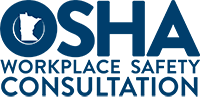Working in summer sun: Steps, tools to prevent heat illness
Print this Article | Send to Colleague
 |
|
Millions of U.S. employees are exposed to heat in their workplaces. Although heat-related illness is preventable, thousands of workers become ill each year while working in hot or humid conditions and some cases are fatal. Nearly three out of four fatalities from heat illness happen during the first week of work because new and returning employees have not built a tolerance to the heat gradually, known as "acclimatization.”
Signs and symptoms – take action
A range of heat illnesses can affect anyone, regardless of age or physical condition. Furthermore, exposure to heat can occur in a variety of outdoor and indoor environments, such as: construction; agriculture; bakeries and kitchens with heat-generating appliances; foundries; and warehouses. Below are a few common types of heat illnesses and their signs and symptoms.
- Heat stroke: confusion, slurred speech, unconsciousness, seizures, heavy sweating or hot and dry skin, very high body temperature and rapid heart rate
- Heat exhaustion: fatigue, irritability, thirst, nausea or vomiting, dizziness or lightheadedness, heavy sweating, elevated body temperature or fast heart rate
- Heat cramps: less serious than heat exhaustion or stroke and marked by muscle spasms or pain (usually in legs, arms or trunk)
If heat stroke is suspected based on symptoms, call 911 right away – this is a medical emergency.
For any case of heat illness, cool the employee off by following first-aid recommendations provided on federal OSHA’s "Heat-related illnesses and first aid” webpage (see osha.gov/heat-exposure/illness-first-aid). Never leave a worker with heat illness alone and, when in doubt, call 911.
To help the affected worker:
- take them to a cooler area, such as in the shade or in air conditioning;
- immerse them in cold water or an ice bath – the best method to cool the body rapidly;
- remove their outer layers of clothing, especially heavy gear; and
- place ice or cold wet towels on their head, neck, trunk, armpits and groin.
Employer’s responsibility to protect workers
Under the federal Occupational Safety and Health Act, employers are responsible for providing workplaces free of known safety hazards. This includes protecting workers from heat-related hazards. It is the employer’s responsibility to:
- provide workers with water, rest and shade;
- allow new or returning workers to gradually increase workloads and take more frequent breaks during the first week of work (acclimatizing);
- plan for emergencies and train workers about prevention; and
- monitor workers for signs of illness.
For indoor workplaces in Minnesota, employers must also adhere to Minnesota Rules 5205.0110, subpart 2, Indoor ventilation and temperature in places of employment (see revisor.mn.gov/rules/5205.0110/#rule.5205.0110.2).
Creating a heat illness prevention plan
Federal OSHA’s Heat Illness Prevention Campaign (see osha.gov/heat) was designed to educate employers and workers on the dangers of working in the heat and to provide resources for developing a heat illness prevention plan. Components of the plan may include the following:
- planning and supervision – explaining who will develop and manage the plan;
- protection of new workers by establishing a culture of acclimatization;
- heat hazard recognition, including environmental monitoring; and
- determination of engineering controls, work practices and personal protective equipment (PPE).
Reducing heat stress – control methods
Employers should always follow the "hierarchy of controls” when determining how to eliminate and reduce hazards. Engineering controls should be used first, followed by work practices and then PPE.
Engineering controls
- Air conditioning, increased ventilation or cooling fans
- Reflective shields to redirect radiant heat
- Insulation of hot surfaces and elimination of steam leaks
- Cooled seats or benches and misting fans
Work practices
- Modify work schedules and schedule shorter shifts for unacclimatized workers (gradually increase shift over one to two weeks)
- Follow the "Rule of 20%,” where new employees work only 20% of the normal duration on their first day and then increase work duration by 20% on subsequent days until the worker is performing a normal schedule
- Require mandatory rest breaks in a cooler environment
- Consider scheduling work at cooler times of the day, such as early morning or late afternoon
Reduce physical demands as much as possible and rotate job functions to minimize worker exertion
PPE
- Insulated suits, reflective clothing and face shields, and cooling neck wraps
- For extreme heat, cooling vests or jackets with reusable ice pack inserts
A comprehensive list of controls is online at osha.gov/heat-exposure/controls
Other helpful tools, information
|
OSHA-NIOSH Heat Safety Tool app
|
Beat the Heat national contest
- In 2023, federal OSHA sponsored the Beat the Heat contest to raise awareness of the dangers of heat exposure in workplaces.
- This year, OSHA is sponsoring a photo contest challenging stakeholders to capture an image of how to work safely in the heat, to highlight and showcase effective strategies and practices.
- More information about the contest and how to enter is available at osha.gov/heat/national-heat-contest
Proposed OSHA rulemaking
- Federal OSHA has initiated the rulemaking process for a standard for heat injury and illness prevention in outdoor and indoor work settings.
- View the advance notice of proposed rulemaking and comments from stakeholders at regulations.gov/document/OSHA-2021-0009-0001.
Other resources, links
- The majority of the information provided in this article was obtained from federal OSHA’s Heat Illness Prevention Campaign webpage (see osha.gov/heat).
- Additional resources and links are available at osha.gov/heat-exposure/resources
About MNOSHA Workplace Safety Consultation
Minnesota OSHA Workplace Safety Consultation provides free consultation services upon request to employers to assist them in their safety and health efforts without citations or penalties. Priority is given to small employers, especially those in high-hazard industries. The only employer obligation is a commitment to correct serious hazards in a timely manner. Your company's name and file are confidential and not available to MNOSHA Compliance.
Contact MNOSHA Workplace Safety Consultation at osha.consultation@state.mn.us,
651-284-5060 or 800-657-3776. And get more information online at dli.mn.gov/about-department/our-areas-service/minnesota-osha-workplace-safety-consultation.

